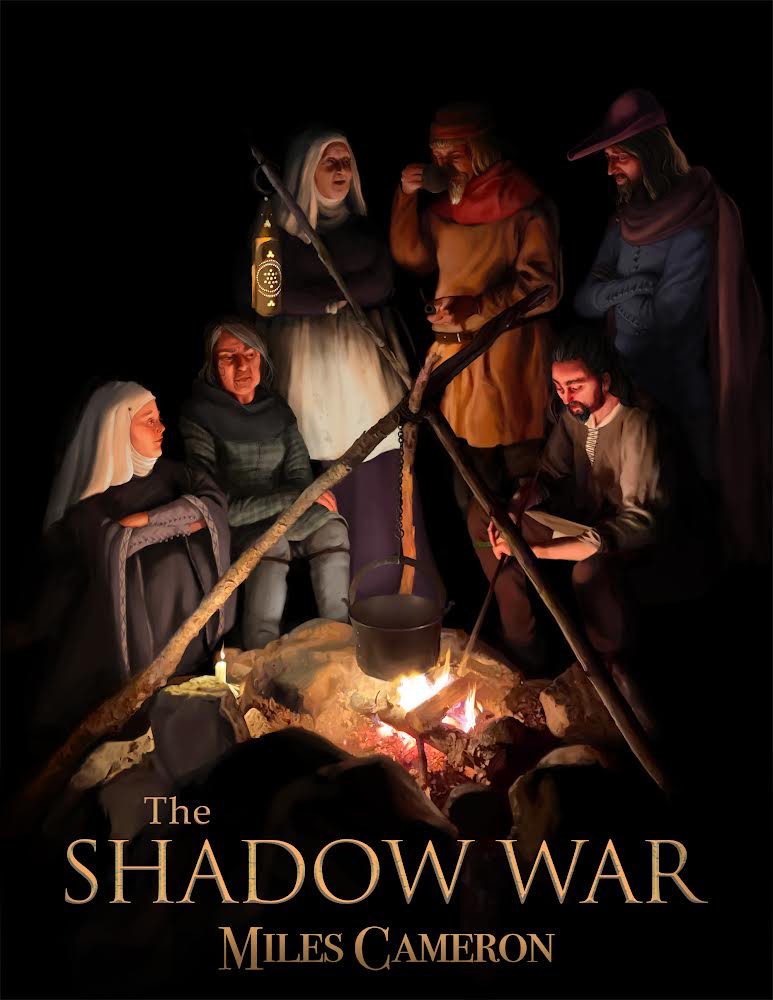Not many pictures today. My computer is refusing to load new ones. If you want to pick up the pictures I’m taking in Greece, follow me on Instagram. https://instagram.com/christian_cameron_author/
This is the second in my series of blogs about my trip to Greece. From today until next Monday, I will be at Marathon (Marathonas) a small town in Attika, about twenty five miles from Athens by road.
One of the most famous battles in world history was fought here. It was pivotal, even to us today in the English-speaking world, because Athens had a (then) 12 year old experiment with democracy going on; they’d just pushed basic, restricted citizenship and voting rights down past the class of aristocrats and onto a new class; wealthy men, certainly, but not ‘descendants of the gods’. These ‘new men’ made the phalanx of Athens bigger… but could they be trusted to fight the way aristocrats fought?
Despite millennia of Athenian propaganda, the Persian attack on Athens was little more than a raid in force, intended to restore the tyranny, get rid of the troublesome war-makers like the pirate/terrorist Miltiades (at least, as seen from Persia) and the insufferable Themistocles and the aristocratic Aristides, and end Athens ‘state sponsorship of terrorism’ by which the Great King of Persia would have meant Athenian meddling in the affairs of his Ionian satrapies; stirring up the Greeks of Asia Minor to revolt; making very profitable raids on Phoenician shipping; and providing military support to insurgencies in Babylon and Egypt… We like to imagine Athens as a sort of early United States, or maybe United Kingdom; really, to the Persians, they were a good deal more like Khadafi’s Libya.
But the thing is that the new, aggressive democracy beat the Persians at Marathon. They beat them decisively; and they did so without the aristocratic Spartans, who had a tendency to sympathize with the Persians, whatever the Frank Miller movies might say. In winning, the greatest effect may have been to create a myth that stands to this day, of the citizen soldier standing against foreign tyranny. But it’s not a bad myth; there’s a lot of stuff behind it, and all in all, the West is a very different place because the Athenian aristocrats and their New Men stuck together in a crisis (barely) and won a major land battle against the greatest empire in the world.
Anyway, for the next five days, I’ll be celebrating that time. Not so much reenacting it; a hundred people cannot really do any justice to a battle that had at least ten thousand men on a side. But a hundred good reenactors can give each other and the public a feeling of what it looked like; can talk about what we know and what we have learned recently, and can, perhaps, dispense with some myths.
With my friends Giannis Kadoglou, Chris Vermijweren, David Dudek, Mike Brennan, Anders Wiik, Cindi Le Dudek, Shelley Power (my agent) and Jevon Garrett, fellow author Jax Reader, (among many others) we’ll do some experiments. We have, among us, the very best reconstructions of late archaic Greek military kit ever made; and surprising as this may be, they are revolutionary. Five years ago, I built what I still regard as the first good reconstruction of an aspis, or ancient Greek shield, but the ‘new’ reconstructions by Mikko SInkonnen of Finland leave mine far behind; weighing six to eight kilos (several Classical historians, including the justly renowned Victor Davis Hanson, posit 20 kilos); helmets by Matt Lukas and Craig Sitch of Manning Imperial made to actual, authentic thicknesses and correctly lined and padded, the first ever; archaic thorakes, or body armour (cuirass) in bronze, painstakingly copied from originals and gain in original thicknesses, by Jeffrey Hildebrandt of Royal Oak Armouries. All much, much lighter than most scholars have guessed, despite the plethora of originals available in Greek and German museums… I’ll be carrying a sword, probably the first accurate reconstruction of a Greek xiphos ever made, in multi fold steel (as the originals were made… they didn’t invent that technique in Damascus) and with the correct hilt, the correct scabbard, allowing experimentation with drawing and cutting and thrusting techniques….
Properly weighted and custom fitted armour as good as ancient armour will allow us to test theories. Herodotus says that the Greeks charged 8 stades to contact — about 1200 meters, a damn long run in the 60 kilos of armour that has, until now, been the standard assumption of many historians. (NB, my 14th c. plate over chain, in steel, covering every inch of my body, with a full face visor helmet, weighs 60 kilos.) So we will run the distance, and see what it’s like to spar with spears at the end.
We’ll run one stade (about 150 meters) which, BTW, is roughly the range of ancient archery, and see how many times Chris Verwijmeren, an expert historical archer, can loose a heavyweight Persian bow at us.
We’ll set up these beautifully recreated aspides (many aspis are aspides… hey, thought you’d like to know) and we’ll shoot at them with painstakingly recreated arrows made of the right cane, the right bronze heads cast to copy existing originals… which will probably destroy at least one $1200 aspis… but that’s how you learn.
Oh, and why, you ask, was all the other armour wrong?
Europeans, in the Middle Ages, built armour for what I will call ‘absolute’ protection. A fully armoured knight expected to survive — uninjured — a major blow from a heavy sword, an axe, or a lance. Steel armor, over maille, with padding, allows an unprecedented level of personal protection.
That’s not what Greek armor was for. It is the armor of the athlete; light, and thin. It will stop a sloppy blow; it will prevent injury from your friend’s saurauter hitting you in the head, or a sword sliding across your ribs. But a dedicated, careful blow with intent will penetrate it. It’s also a fashion accessory; there are theorists who says it’s main intent was to make men beautiful. Don’t be surprised; making men feel beautiful has been a major part of military fashion for thousands of years. Don’t sneer; if you feel yourself to look like a god, you function better in the terror and horror of battle. You are also easier to follow, and in hand to hand combat, you want your friends to know where you are.
There’s another mistake commonly made by a certain kind of reenactor; the insertion of modern ideas and aesthetics instead of close attention to the ideals and aesthetics of the past. There is, out there, a generation of equipment more designed for Conan movies than based on actual Greek artifacts; unpolished bronze, fur, crude sewing. Thick bronze and heavy, heavy shields so that modern weekend ‘warriors’ can pretend to be tough.
Just FYI, being a reenactor is tough enough without fabricating bad equipment. But it’s not about ‘tough.’ It’s about history.
So we reenactors have made various mistakes for years (me too!), trying to make Greek armor heavy enough… to stop various blows, and making the aspis of the wrong materials…like plywood, a material full of epoxy and not at all like the light woods of the Ancient World.
This weekend, we’ll be…better. Much better, but never perfect, and in five more years, we’ll know more, and do more with it. We will better model and experience the past. Incrementally.
And we hope on Saturday and Sunday that Paul Bardunias, an old friend and debating partner in the mystical world of hoplite combat, will come and lead some experiments on the function of Othismos (pushing) in phalanx combat. And I’ll try and cut arrows out of the air, and we’ll all dance, and we’ll drink wine, and we’ll cook Ancient Greek food and camp on one of the most beautiful beaches in the world.
And hey, if you are in Greece right now, we’re at the south end of Schinias National Park. Come visit.



How it should be done… and is being done in situations like this and others.
Last time I looked into ancient reed arrows, I found that nobody was even sure what genus of reeds were used, and that the properties of =phragmites= and the other likely genera of reeds vary quite a bit depending on climate and environment and processing (“the soft kit is always the hard part”) Has that changed? Experimenting with some replicas of Akkadian and Cimmerian bows could be fun.
Was involved in some tests on Egyptian archery at The Royal Armouries some years ago. I have never done anything on Greek archery as such. Dad has a fair collection of Greek Classical period bronze arrow heads
Those sound fun. Were they the original ones with Tomas Hulit or the ones for the Nova series “Building Pharaoh’s Chariot” or something else? I meant to direct my question to our generous host, but I imagine that he won’t have time to reply until after his trip to Greece. Sometimes reenactors and craftsmen find out things which have not yet made it into academic publishing, and I have not looked into archery in the eastern Mediterranean in the Achaemenid period for a few years now.
It was with Thomas, I was there doing some work on something else, and Thomas came in to do some tests with The Armouries, my father was creative director and head of interpretation for the museums at the time. Thinks about it’s got be over 15 years ago! I’mm not as young as I think I am. 😉
Indeed the best work comes out from the combination of the academic and practitioner…